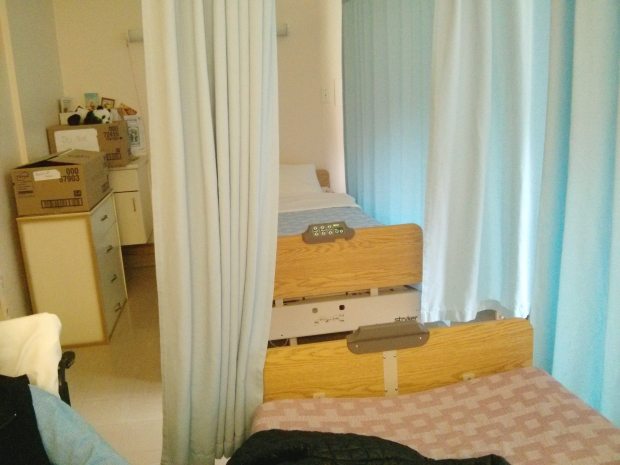BC Care Providers Association CEO Daniel Fontaine is featured in an article by Kim Pemberton in today’s Vancouver Sun. The article addresses the issue of unfunded rooms and excess capacity in B.C.’s private care homes. You can read the article below.
+++
Single rooms sit vacant in B.C.’s private nursing homes
Beds aren’t considered part of publicly available inventory
BY KIM PEMBERTON
Single bedrooms are sitting empty in B.C. nursing homes while more than 800 seniors are having to live in multi-occupancy rooms of three to five people or waiting for a community placement while staying in an expensive hospital bed.
 The BC Care Providers Association, which represents 145 of B.C.’s 331 publicly funded long-term care facilities, recently polled its members to determine how many of its single rooms are empty and available for use. It determined approximately 10 per cent of the facilities have beds ready now in the various health authorities throughout the province, with the exception of the Northern Health Authority, which has the highest percentage of seniors in B.C. waiting for a nursing home facility.
The BC Care Providers Association, which represents 145 of B.C.’s 331 publicly funded long-term care facilities, recently polled its members to determine how many of its single rooms are empty and available for use. It determined approximately 10 per cent of the facilities have beds ready now in the various health authorities throughout the province, with the exception of the Northern Health Authority, which has the highest percentage of seniors in B.C. waiting for a nursing home facility.
“Fraser Health members have 1,000 beds in the private market that can be purchased now, of which 100, or 10 per cent, are physically empty,” said the association’s CEO Daniel Fontaine.
“This experience in Fraser Health is not dissimilar to other health authorities … Those empty beds are just within our membership base, which means the number is higher (when other private nursing homes not in the association membership are included).”
In 2014/2015, 11 per cent of hospital patients in B.C. were seniors occupying an alternative care bed. (The Ministry of Health could not provide the exact number of seniors in alternative care beds in hospital). Fontaine explained an alternative level of care bed meant the seniors were living in the hospital but “were flagged by medical staff as people who could be in the community.”“It costs $1,800 a day for an acute care bed and in community, the bed costs $200 a day. You kinda scratch your head and wonder why are people in $1,800-a-day beds when we have the capacity today to alleviate those wait times?”
Fontaine said he believes the reasons the association members’ single bedrooms are not being purchased by the Ministry of Health for seniors in multi-occupancy rooms comes down to finances and logistics.
“It’s not something we’ve had a large discussion with them about existing capacity within care,” he said.
“If the Ministry of Health has it as a priority (for seniors in nursing homes to be in single rooms), I’m willing to sit at a table tomorrow with them to discuss a plan.”

Laura Heinze, spokeswoman for the Ministry of Health, said health minister Terry Lake is planning to meet with Fontaine next week on a variety of topics to support seniors in long-term care.
“Health authorities identify how many beds they need, and then work with their own facilities and contracted providers to ensure that those needs are met. The additional bed capacity that you reference are beds that the private sector has created and marked for use by private pay clients, so they are not considered part of the publicly available inventory. That said, the Ministry is currently having discussions with the BC Care Providers Association as to how we can work together to leverage existing space,” Heinze said in a written statement.
“Generally, if a health authority identifies that they need additional beds, they go through an RFP (Request for Proposal) process, and providers compete through those normal channels — this would be an opportunity for providers to offer up their beds for the public inventory.”
Heinze also agreed with Fontaine that “it is less cost-effective for a senior waiting for a residential care bed to be taking up a hospital placement.
“That is why the Ministry has been moving forward on our new strategic direction, which places a focus on improving community and primary care,” the ministry statement read.
“Last year, we consulted broadly with health care partners across the system, and we are now developing concrete plans in key priority areas. This work will start rolling out this year, and will include a strong focus on primary care and community care for frail seniors. We will be looking to enhance primary and community services with a strong focus on older seniors with complex medical conditions and frailty. Health authorities have been asked to prepare three-year plans that will support the Ministry’s overall strategic priorities in this way, and we are looking to see where we can reallocate from the acute hospital sector.”





